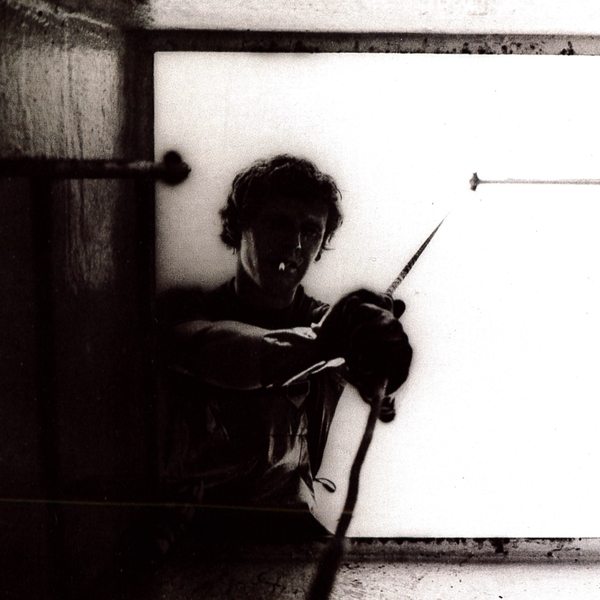The Original Story of ‘The Perfect Storm’
Six young men set out on a dead-calm sea to seek their fortunes. Suddenly, they were hit by the worst gale in a century, and there wasn’t even time to shout.
New perk: Easily find new routes and hidden gems, upcoming running events, and more near you. Your weekly Local Running Newsletter has everything you need to lace up! .
You’re about to read one of the ���ϳԹ��� Classics, a series highlighting the best stories we’ve ever published, along with author interviews, where-are-they-now updates, and other exclusive bonus materials. Get access to all of the ���ϳԹ��� Classics when you sign up for ���ϳԹ���+.
“They that go down to the sea in ships…see the deeds of the Lord. They reel and stagger like drunken men, they are at their wits’ end.” —Psalm 107
Gloucester, Massachusetts, is a tough town of 28,000 people, squeezed between a rocky coast and a huge tract of scrub pine and boulders called Dogtown Common. Local widows used to live in Dogtown, along with the forgotten and the homeless, while the rest of the community spread out along the shore. Today, a third of all jobs in Gloucester are fishing related, and the waterfront bars—the Crow’s Nest, the Mariners Pub, the Old Timer’s Tavern—are dark little places that are unmistakably not for tourists.
The Story Behind 'The Perfect Storm'
We caught up with author Sebastian Junger to find out how he reported this incredible ���ϳԹ��� Classic story, what’s changed in the commercial fishing industry, and why he’s drawn to people who have dangerous jobs.One street up from the coastline is Main Street, where the bars tend to have windows and even waitresses, and then there is a rise called Portugee Hill. Halfway up Portugee Hill is Our Lady of Good Voyage Church, a large stucco construction with two bell towers and a statue of the Virgin Mary, who is looking down with love and concern at the bundle in her arms. The bundle is a Gloucester fishing schooner.
September 18, 1991, was a hot day in Gloucester, tourists shuffling down Main Street and sunbathers still crowding the wide expanses of Good Harbor Beach. Day boats bobbed offshore in the heat shimmer, and swells sneaked languorously up against Bass Rocks.
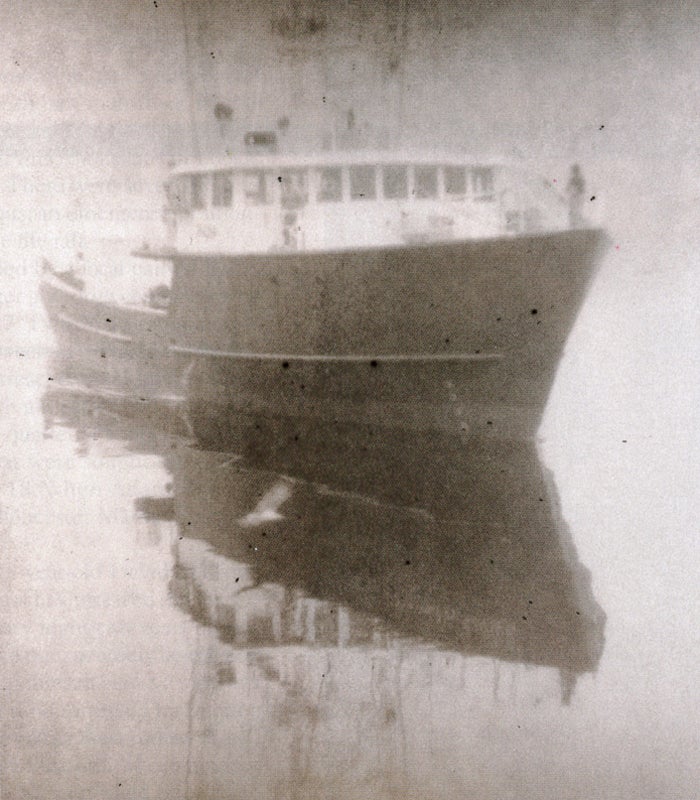
At Gloucester Marine Railways, a haul-out place at the end of a short peninsula, Adam Randall stood contemplating a boat named the Andrea Gail. He had come all the way from Florida to go swordfishing on the boat, and now he stood considering her uneasily. The Andrea Gail was a 70-foot longliner that was leaving for Canada’s Grand Banks within days. He had a place on board if he wanted it. “I just had bad vibes,” he would say later. Without quite knowing why, he turned and walked away.
Longliners are steel-hulled fishing boats that gross as much as $1 million in a year. Up to half of that can be profit. Swordfish range up and down the coast from Puerto Rico to Newfoundland, and the longliners trail after them all year like seagulls behind a day trawler. The fish are caught with monofilament lines 40 miles long and set with a thousand hooks. For the crew, it’s less a job than a four-week jag. They’re up at four, work all day, and don’t get to bed until midnight. The trip home takes a week, which is the part of the month when swordfishermen sleep. When they get to port the owner hands each of them several thousand dollars. A certain amount of drinking goes on, and then a week later they return to the boat, load up, and head back out.
“Swordfishing is a young man’s game, a single man’s game,” says the mother of one who died at it. “There aren’t a lot of Boy Scouts in the business,” another woman says.
Sword boats come from all over the East Coast—Florida, the Carolinas, New Jersey. Gloucester, which is located near the tip of Cape Ann, a 45-minute drive northeast from Boston, is a particularly busy port because it juts so far out toward the summer fishing grounds. Boats load up with fuel, bait, ice, and food and head out to the Grand Banks, about 90 miles southeast of Newfoundland, where warm Gulf Stream water mixes with the cold Labrador current in an area shallow enough—”shoal” enough, as fishermen say—to be a perfect feeding ground for fish. The North Atlantic weather is so violent, though, that in the early days entire fleets would go down at one time, a hundred men lost overnight. Even today, with loran navigation, seven-day forecasts, and satellite tracking, fishermen on the Grand Banks are just rolling the dice come the fall storm season. But swordfish sells for around $6 a pound, and depending on the size of the boat a good run might take in 30,000 to 40,000 pounds. Deckhands are paid shares based on the catch and can earn $10,000 in a month. So the tendency among fishermen in early fall is to keep the dice rolling.
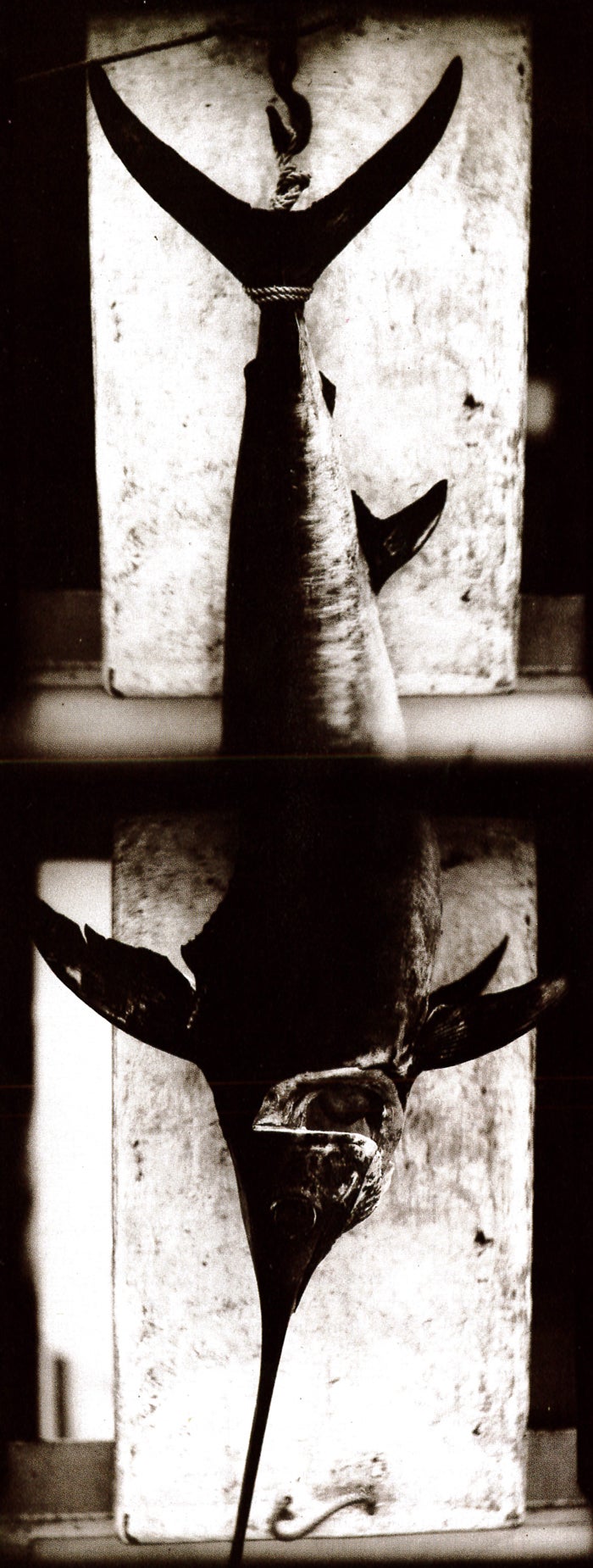
The Andrea Gail was one of maybe a dozen big commercial boats gearing up in Gloucester in mid-September 1991. She was owned by Bob Brown, a longtime fisherman who was known locally as Suicide Brown because of the risks he’d taken as a young man. He owned a second longliner, the Hannah Boden, and a couple of lobster boats. The Andrea Gail and the Hannah Boden were Brown’s biggest investments, collectively worth well over a million dollars.
The Andrea Gail, in the language, was a raked-stem, hard-chined, western-rig boat. That meant that her bow had a lot of angle to it, she had a nearly square cross-section, and her pilothouse was up front rather than in the stern. She was built of welded steel plate, rust-red below waterline, green above, and she had a white wheelhouse with half-inch-thick safety glass windows. Fully rigged, for a long trip, she carried hundreds of miles of monofilament line, thousands of hooks, and 10,000 pounds of baitfish. There were seven life preservers on board, six survival suits, an emergency position indicating radio beacon, and one life raft.
The Andrea Gail was captained by a local named Frank “Billy” Tyne, a former carpenter and drug counselor who had switched to fishing at age 27. Tyne had a reputation as a fearless captain, and in his ten years of professional fishing he had made it through several treacherous storms. He had returned from a recent trip with almost 40,000 pounds of swordfish in his hold, close to a quarter of a million dollars’ worth. Jobs aboard Tyne’s boat were sought after. So it seemed odd, on September 18, when Adam Randall walked back up the dock at Gloucester Marine Railways and returned to town.
Randall’s replacement was 28-year-old David Sullivan, who was mildly famous in town for having saved the lives of his entire crew one bitter January night two years before. When his boat, the Harmony, had unexpectedly begun taking on water, Sullivan had pulled himself across a rope to a sister ship and got help just in time to rescue his sinking crew. Along with Sullivan were a young West Indian named Alfred Pierre; 30-year-old Bobby Shatford, whose mother, Ethel, tended bar at the Crow’s Nest on Main Street; and two men from Bradenton Beach, Florida—Dale Murphy, 30, and Michael “Bugsy” Moran, 36.
On September 20, Billy Tyne and his crew passed Ten Pound Island, rounded Dogbar Breakwater, and headed northeast on a dead-calm sea.
For several generations after the first British settlers arrived in Gloucester, the main industries on Cape Ann were farming and logging. Then around 1700 the cod market took off, and Gloucester schooners began making runs up to the Grand Banks two or three times a year. French and Basque fishermen had already been working the area from Europe since 1510, perhaps earlier. They could fill their holds faster by crossing the Atlantic and fishing the rich waters of the Banks than by plying their own shores.
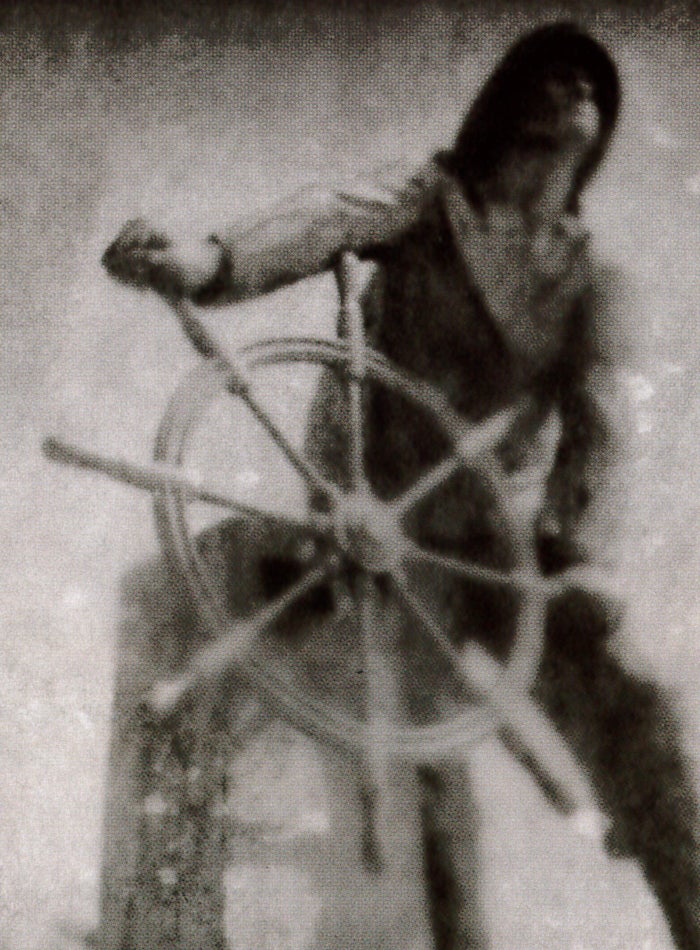
The Gloucester codfishermen worked from dories and returned to the schooners each night. Payment was reckoned by cutting the tongues out of the cod and adding them up at the end of the trip. When fog rolled in, the dories would drift out of earshot and were often never heard from again. Occasionally, weeks later, a two-man dory crew might be picked up by a schooner bound for, say, Pernambuco or Liverpool. The fishermen would make it back to Gloucester several months later, walking up Main Street as if returning from the dead.
The other danger, of course, was storms. Like a war, a big storm might take out all the young men of a single town. In 1862, for example, a winter gale struck 70 schooners fishing the dangerous waters of Georges Bank, east of Cape Cod. The ships tried to ride out 50-foot seas at anchor. By morning 15 Gloucester boats had gone down with 125 men. At least 4,000 Gloucestermen have been lost at sea, but some estimates run closer to 10,000. A bronze sculpture on the waterfront commemorates them: THEY THAT GO DOWN TO THE SEA IN SHIPS 1623-1923. It shows a schooner captain fighting heavy weather, his face framed by a sou’wester hat.
In the early days, a lot of superstition went into seafaring. Occasionally men stepped off of ill-fated boats on a hunch. Captains refused to set sail on Fridays, since that was the day their Lord had been crucified. Boats often had lucky silver coins affixed to the base of their masts, and crew members took care never to tear up a printed page because they never knew—most of them being illiterate—whether it was from the Bible.
The Andrea Gail took nearly a week to reach the fishing grounds. The six crewmen watched television, cooked and ate, slept, prepared the fishing gear, talked women, talked money, talked horse racing, talked fish, stared at the sea. Swordfishermen seldom eat swordfish when they’re out. Like many ocean fish, it’s often full of sea worms, four feet long and thick as pencils, and though the worms are removed prior to market, many of the men who catch swordfish consider it fit only for the landlubbing public. At sea a fisherman will eat steak, spaghetti, chicken, ice cream, anything he wants. On ice in the Andrea Gail‘s hold was $3,000 worth of groceries.
The boat arrived at the Grand Banks around September 26 and started fishing immediately. On the main deck was a huge spool of 600-pound-test monofilament, the mainline, which passed across a bait table and paid out off the stern. Baiters alternate at the mainline like oldtime axmen on a Douglas fir. They are expected to bait a hook with squid or mackerel every 15 seconds; at this rate it takes two men four hours to set 40 miles of line. After they are done they shower and retire to their bunks. Around four in the morning the crew gets up and starts hauling the line. A hydraulic drum on the wheelhouse deck slowly pulls it in, and the crew unclips the leaders as they come. When there’s a fish at the end of a leader, deckhands catch it with steel gaffs and drag it, struggling, aboard. They saw the sword off, gut and behead the fish with a knife, and drop it into the hold.
The crew has dinner in midafternoon, baits the line again, and sets it back out. They might then have a couple of beers and go to bed.
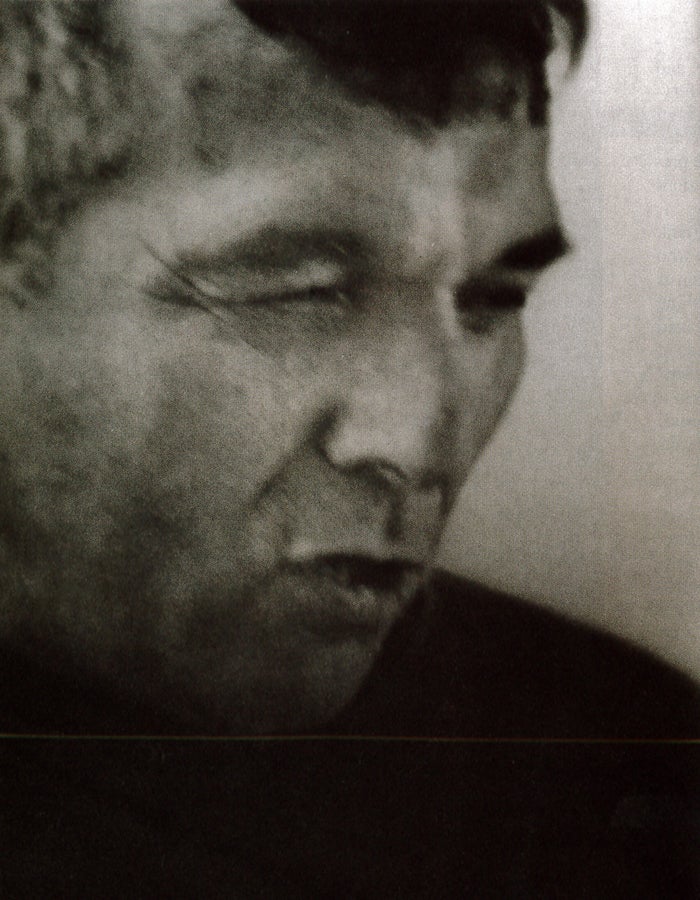
The Andrea Gail had been out 38 days when the National Weather Service suddenly started issuing fax bulletins about a low-pressure system that was building over southern Quebec and heading out to sea: “DEVELOPING STORM 45N 73W MOVING E 24 KTS. WINDS INCREASING TO 35 KTS AND SEAS BUILDING TO 16 FT.” Meanwhile, the Weather Service was keeping a close eye on the mid-Atlantic, where Hurricane Grace, which had developed in the vicinity of Bermuda two days before, was now tracking steadily northwest toward the Carolina coast.
It was Sunday, October 27, very late to be pushing one’s luck on the Grand Banks. Most of the fleet was well to the east of Tyne, out on the high seas, but a 150-foot Japanese swordboat named the Eishan Maru and the 77-foot Mary T were fishing nearby. Tyne told Albert Johnston, the Mary T‘s captain, that he had 40,000 pounds of fish in his hold—an impressive catch—and now he was heading home.
The question was, could he make it through the Canadian storm that was rapidly coming his way? He would have to cross some very dangerous water while passing Sable Island, a remote spit 120 miles southeast of Nova Scotia, whose shoals are known to fishermen as the Graveyard of the Atlantic. That night Linda Greenlaw, the captain of Bob Brown’s other longliner, the Hannah Boden, radioed in and asked Tyne if he’d received the weather chart. “Oh, yeah, I got it,” Tyne replied. “Looks like it’s gonna be wicked.” They set some channels to relay information to Bob Brown and decided to talk the following night.
Though Billy Tyne had no way of knowing it, the heavy weather that was now brewing in the North Atlantic was an anomaly of historic proportions. Three years later, professional meteorologists still talk animatedly about the storm of ’91, debating how it formed and exactly what role Hurricane Grace played in it all. Generally, hurricanes this late in the season are anemic events that quickly dissipate over land. Hurricane Grace, though, never made it to shore; a massive cold front, called an anticyclone, was blocking the entire eastern seaboard. Well off the Carolinas, Grace ran up against the cold front and literally bounced off. She veered back out to sea and, though weakened, churned northeast along the warm Gulf Stream waters.
At the same time, the low-pressure system that had developed over Quebec and moved eastward off the Canadian Maritimes was beginning to behave strangely. Normally, low-pressure systems in the region follow the jet stream offshore and peter out in the North Atlantic, the usual pattern of the well-known nor’easter storms. But this system did the opposite: On Monday, October 28, it unexpectedly stalled off the coast of Nova Scotia and began to grow rapidly, producing record high seas and gale-force winds. Then it spun around and headed back west, directly at New England, a reversal known as a retrograde.
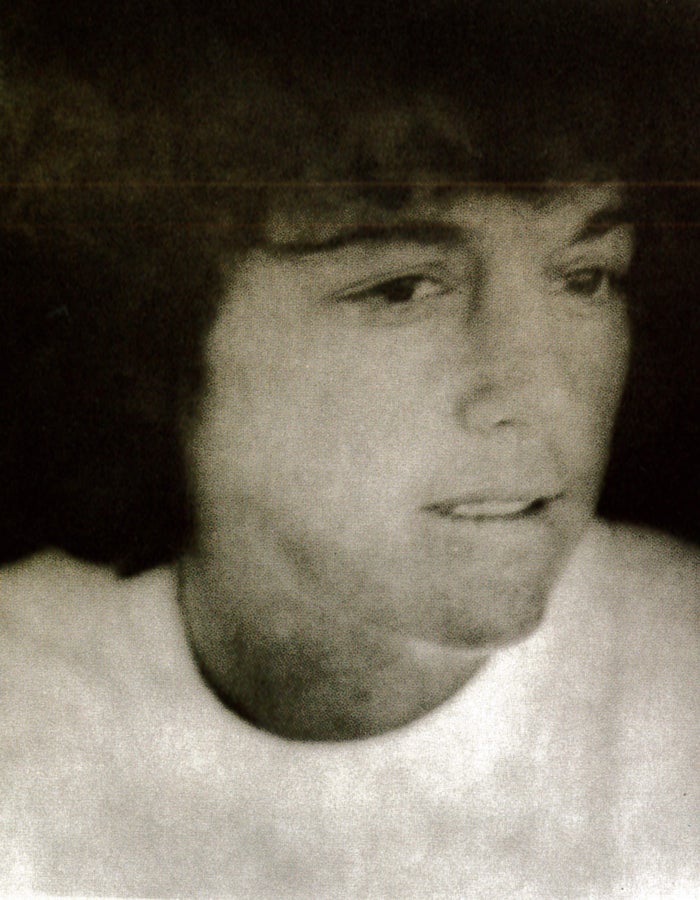
Meteorologists still disagree on what caused the storm to grow so suddenly and then to retrograde. But the best theory offered by the National Weather Service and its Canadian equivalent, Environment Canada, is that it was caught between the counter-clockwise spin of the dying hurricane and the clockwise swirl of the anticyclone, creating a funnel effect that forced it toward the coast at speeds of up to ten knots. The farther west it tracked, the more it absorbed moisture and energy from the remnants of Hurricane Grace—and the more ferocious it became.
The technical name for the new storm was a “midlatitude cyclone.” The people in its path, however, would later call it the No Name Hurricane, since it had all the force of a hurricane, but was never officially designated as one. And because the brunt of the storm would strike the eastern seaboard around October 31, it would also acquire another name: the Halloween Gale.
Around 6 P.M. on Monday, October 28, Tyne told the skipper of a Gloucester boat named the Allison that he was 130 miles north-northeast of Sable Island and experiencing 80-knot winds. “She’s comin’ on, boys, and she’s comin’ on strong,” he said. According to Tyne, the conditions had gone from flat calm to 50 knots almost without warning. The rest of the fleet was farther east and in relative safety, but the Andrea Gail was all alone in the path of the fast-developing storm. She was probably running with the waves and slightly angled toward them—”quartering down-sea,” as it’s called—which is a stable position for a boat; she’ll neither plow her nose into the sea nor roll over broadside. A wave must be bigger than a boat to flip her end-over-end, and the Andrea Gail was 70 feet long. But by this point, data buoys off Nova Scotia were measuring waves as high as 100 feet—among the highest readings ever recorded. Near Sable Island the troughs of such monsters would have reached the ocean floor.
Tyne would have radioed for help if trouble had come on slowly—a leak or a gradual foundering, for example. “Whatever happened, happened quick,” a former crew member from the Hannah Boden later said. Tyne didn’t even have time to grab the radio and shout.
Waves of unimaginable proportions have been recorded over the years. When Sir Ernest Shackleton skippered an open sailboat off the South Georgian Islands in May 1916, he saw a wave so big that he mistook the foaming crest for a break in the clouds. “It’s clearing, boys!” he yelled to his crew, and then, moments later: “For God’s sake, hold on, it’s got us!” By some miracle they managed to survive. In 1933 in the South Pacific an officer on the USS Ramapo looked to stern and saw a wave that was later calculated to be 112 feet high. In 1984 a three-masted schooner named the Marques was struck by a single wave that sent her down in less than a minute, taking 19 people with her. Nine survived, including a strapping young Virginian who managed to force his way up through a rising column of water and out an open hatch.
Oceanographers call these “extreme waves” or “rogues.” Old-time Maine fishermen call them “queer ones.” They have roared down the stacks of navy destroyers, torn the bows off container ships, and broken cargo vessels in two.
When the rogue hit the Andrea Gail, sometime between midnight and dawn on October 29, Tyne would probably have been alone in the wheelhouse and already exhausted after 24 hours at the helm. Captains, unwilling to relinquish the wheel to inexperienced crew, have been known to drive for two or even three days straight. The crew would have been below deck, either in the kitchen or in their staterooms. Once in a while one of the men would have come up to keep Tyne company. In the privacy of the wheelhouse he might have admitted his fears: This is bad, this is the worst I’ve ever seen. There’s no way we could inflate a life raft in these conditions. If a hatch breaks open, if anything lets go…
Tyne must have looked back and seen an exceptionally big wave rising up behind him. It would have been at least 70 feet high, maybe 100 feet. The stern of the boat would have risen up sickeningly and hurled the men from their bunks. The Andrea Gail would have flipped end-over-end and landed hull-up, exploding the wheelhouse windows. Tyne, upside-down in his steel cage, would have drowned without a word. The five men below deck would have landed on the ceiling. The ones who remained conscious would have known that it was impossible to escape through an open hatch and swim out from under the boat. And even if they could—what then? How would they have found their survival suits, the life raft?
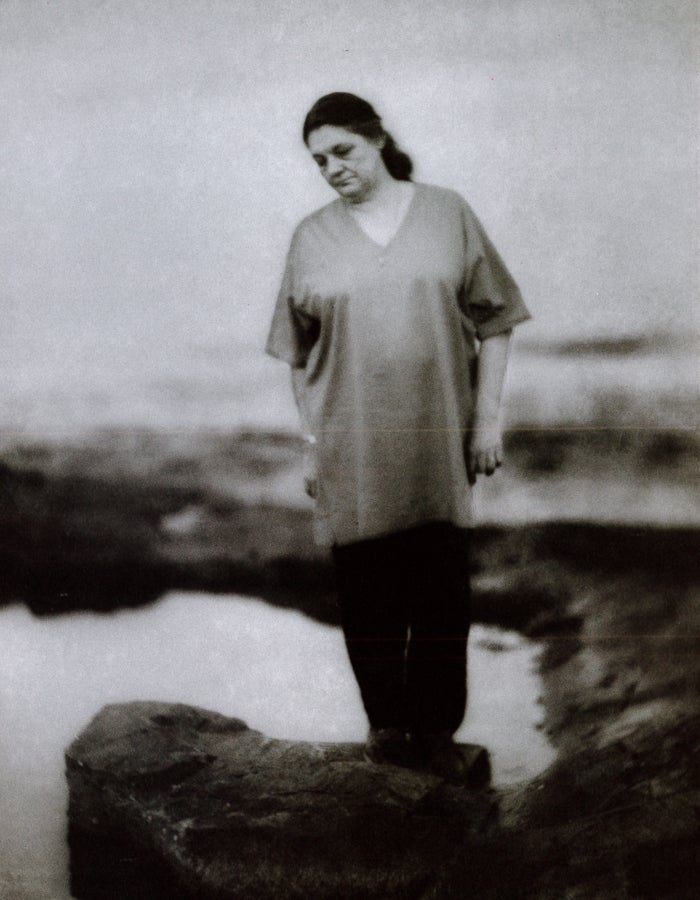
The Andrea Gail would have rolled drunkenly and started to fill. Water would have sprayed through bursting gaskets and risen in a column from the wheelhouse stairway. It would have reached the men in their staterooms and it would have been cold enough to take their breath away. At least the end would have come fast.
It wasn’t until Tuesday afternoon that the boats on the Grand Banks were able to check in with one another. The Eishan Marti, which was closest to Billy Tyne’s last known location, reported that she was completely rolled by one huge wave; her wheelhouse windows were blown out, and she was left without rudder or electronics. The Lori Dawn Eight had taken so much water down her vents that she lost an engine and headed in. The Mary T had fared well but had already taken $165,000 worth of fish in nine days, so she headed in, too. The Hannah Boden, the Allison, the Mr. Simon, and the Miss Millie were way to the east and “had beautiful weather,” in Albert Johnston’s words. That left the Andrea Gail.
By Wednesday, October 30, the storm had retrograded so far to the west that conditions at sea were almost tolerable. At that point the worst of it was just hitting Gloucester. The Eastern Point neighborhood, where the town’s well-to-do live, had been cut in half. Waves were rolling right through the woods and into some of the nicest living rooms in the state. On the Back Shore, 30-foot waves were tearing the facades off houses and claiming whole sections of Ocean Drive. The wind, whipping through the power lines, was hitting pitches that no one had ever heard before. Just up the coast in Kennebunkport, some Democrats were cheered to see boulders in the family room of President George Bush’s summer mansion.
“The only light I can shed on the severity of the storm is that until then, we had never-ever had a lobster trap move offshore,” said Bob Brown. “Some were moved 13 miles to the west. It was the worst storm I have ever heard of, or experienced.”
By now the storm had engulfed nearly the entire eastern seaboard. Even in protected Boston Harbor, a data buoy measured wave heights of 30 feet. A Delta Airlines pilot at Boston’s Logan Airport was surprised to see spray topping 200-foot construction cranes on Deer Island. Sitting on the runway waiting for clearance, his air speed indicator read 80 miles per hour. Off Cape Cod, a sloop named the Satori lost its life raft, radios, and engine. The three people in its crew had resigned themselves to writing good-bye notes when they were finally rescued 200 miles south of Nantucket by a Coast Guard swimmer who jumped, untethered, from a helicopter into the roiling waves. An Air National Guard helicopter ran out of fuel off Long Island, and its crew had to jump one at a time through the darkness into the sea. One man was killed and the other four were rescued after drifting throughout the night. All along the coast, waves and storm surge combined to act as “dams” that prevented rivers from flowing into the sea. The Hudson backed up 100 miles to Albany and caused flooding, so did the Potomac.
The stern would have risen up sickeningly, and the Andrea Gail would have flipped and landed hull-up, exploding the wheelhouse windows. Tyne, upside-down in his steel cage, would have drowned without a word.
Brown tried in vain all day Wednesday to radio Tyne. That evening he finally got through to Linda Greenlaw, who said she’d last heard Billy Tyne talking to other boats on the radio Monday night. “Those men sounded scared, and we were scared for them,” she said later. Later that night Brown finally alerted the U.S. Coast Guard.
“When were they due in?” the dispatcher asked.
“Next Saturday,” Brown replied.
The dispatcher refused to initiate a search because the boat wasn’t overdue yet. Brown then got the Canadian Coast Guard on the line. “I’m afraid my boat’s in trouble, and I fear the worst,” he told the dispatcher in Halifax. At dawn Canadian reconnaissance planes, which were already in the area, began sweeping for the Andrea Gail.
Two days later, a U.S. Coast Guard cutter and five aircraft were also on the case. But there was no clue about the missing boat until November 5, when the Coast Guard positively identified the Andrea Gail‘s radio beacon and propane tank, which had washed up on Sable Island.
“The recovered debris is loose gear and could have washed overboard during heavy weather,” said Petty Officer Elizabeth Brannan. “No debris has been located that indicates the Andrea Gail has been sunk.”
The search had covered more than 65,000 square miles at that point. In heavy seas it’s hard for a pilot to be sure he is seeing everything—one Coast Guard pilot reported spotting a 500-foot ship that he had completely missed on a previous flight—so no one was leaping to any conclusions. Two days and 35,000 square miles later, though, it was hard not to assume the worst: Now the Andrea Gail‘s emergency position—indicating radio beacon had been found. It, too, had washed up on the beaches of Sable Island.
An EPIRB is a device about the size of a bowling pin that automatically emits a radio signal if it floats free of its shipboard holster. The signal travels via satellite to onshore listening posts, where Coast Guard operators decode the name of the boat and her location to within two miles. EPIRBs have been required equipment for fishing vessels on the high seas since 1990. The only catch is that the device must be turned on, something captains do automatically when they leave port. (“It’s not the sort of thing you forget,” says one captain.) Though Bob Brown insists that the Andrea Gail‘s EPIRB had been turned on when it left port, it was found on Sable Island disarmed.
The Coast Guard called off the search on November 8, 11 days after the Andrea Gail had presumably gone down. Search planes had covered 116,000 square miles of ocean. “After taking into account the water temperature and other factors, we felt the probability of survival was minimal,” Coast Guard Lieutenant Brian Krenzien told reporters at the time. The water temperature was 46 degrees. When a man falls overboard on the Grand Banks that late in the year, there usually isn’t even time to turn the boat around.
“I finally gave up after the Coast Guard called the search off,” says Ethel Shatford, Bobby Shatford’s mother, at the Crow’s Nest. “It was very hard, though. You always read stories about people being found floating around in boats. The memorial was on November 16. There were more than a thousand people. This bar and the bar next door were closed, and we had enough food for everyone for three days. Recently we had a service for a New Bedford boat that went down last winter. None of the crew was from here, but they were fishermen.”
The Crow’s Nest is a low, dark room with wood-veneer paneling and a horseshoe bar where regulars pour their own drinks. On the wall below the television is a photo of Bobby Shatford and another of the Andrea Gail, as well as a plaque for the six men who died. Upstairs there are cheap guest rooms where deckhands often stay.
Ethel Shatford is a strong, gray-faced Gloucester native in her late fifties. Three of her own sons have fished, and over the years she has served as den mother to scores of young fishermen on the Gloucester waterfront. Four of the six men who died on the Andrea Gail spent their last night on shore in the rooms of the Crow’s Nest.
“My youngest graduated high school last June and went fishing right off the b-a-t,” she says. “That was what he always wanted to do, fish with his brothers. Bobby’s older brother, Rick, used to fish the Andrea Gail years ago.”
She draws a draft beer for a customer and continues. “The Andrea Gail crew left from this bar. They were all standing over there by the pool table saying good-bye. About the only thing different that time was that Billy Tyne let them take our color TV on the boat. He said, Ethel, they can take the TV, but if they watch it instead of doing their work, the TV’s going overboard.’ I said, That’s fine, Billy, that’s fine.’
That was the last time Shatford ever saw her son. Recently a young guy drifted into town who looked so much like Bobby that people were stopping and staring on the street. He walked into the Crow’s Nest, and another bartender felt it necessary to explain to him why everyone was looking at him. “He went over to the picture of Bobby and says, `If I sent that picture to my mother, she’d think it was me.’
Linda Greenlaw still comes into the bar from time to time, between trips, swearing that some day she’s going to “meet the right guy and retire to a small island in Maine.” Bob Brown settled out of court with several of the dead crewmembers’ families after two years of legal wrangles. Adam Randall, the man who had stepped off the Andrea Gail at the last minute, went on to crew with Albert Johnston on the Mary T . When he found out that the Andrea Gail had sunk in the storm, all he could say was, “I was supposed to have been on that boat. That was supposed to have been me.”
During the spring of 1993 the Mary T was hauled out for repairs, and Randall picked up work on a tuna longliner, the Terri Lei, out of Georgetown, South Carolina. On the evening of April 6, 1993, the crew of the Terri Lei set lines. In the early morning, there were reports of gusty winds and extremely choppy seas in the area. At 8:45 A.M. the Coast Guard in Charleston, South Carolina, picked up an EPIRB signal and sent out two aircraft and a cutter to investigate. By then the weather was fair and the seas were moderate. One hundred and thirty-five miles off the coast, they found the EPIRB, some fishing gear, and a self-inflating life raft. The raft had the name Terri Lei stenciled on it. There was no one on board.
Sebastian Junger went on to publish The Perfect Storm in 1997, based on the story of the Andrea Gail.
